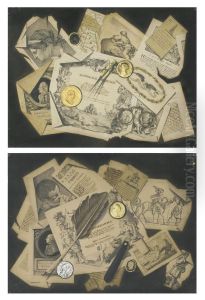Pasquale Angiolini Paintings
Pasquale Angiolini, born in 1730 in Florence, Italy, was a pivotal figure in the development of ballet in the 18th century. His contributions to the art form were significant in shaping ballet from a courtly entertainment into a professional theatrical art. Angiolini's career spanned several European countries, reflecting the cosmopolitan nature of the arts during the Enlightenment. He was not only a choreographer but also a dancer and theorist, whose work laid the groundwork for the evolution of ballet into its classical form. Angiolini's most notable contribution to ballet was his emphasis on dramatic coherence and the integration of plot, music, and dance. He was a proponent of the ballet d'action, a genre that sought to convey a narrative entirely through dance, aligning him with contemporary reformers like Jean-Georges Noverre. Angiolini's works often drew upon themes from classical antiquity and literature, aiming to elevate ballet to a status comparable to that of opera and drama. His ballet 'Don Juan ou Le Festin de Pierre' (1761), based on the legend of Don Juan, is particularly famous for its innovative use of music and choreography to drive the narrative. Throughout his career, Angiolini worked across Europe, from Vienna, where he was ballet master at the Imperial Court, to Milan, Warsaw, and Saint Petersburg. His tenure in Vienna was especially fruitful; there, he collaborated with Christoph Willibald Gluck, a leading composer of the time, on several ballets. This partnership was instrumental in the development of the ballet d'action. Angiolini's theoretical writings, including 'Lettere sul ballo' (Letters on Dance), further articulate his vision for ballet as a serious art form capable of expressing complex emotions and stories. Angiolini's impact on ballet was profound. Through his choreographic work, collaborations, and writings, he helped to redefine ballet as a narrative and expressive art form. His legacy is seen in the foundations of modern ballet, where narrative and expressive depth are central. Pasquale Angiolini died in 1803, but his innovative approach to ballet continues to influence choreographers and dancers to this day.
